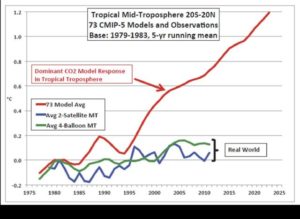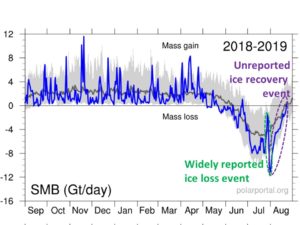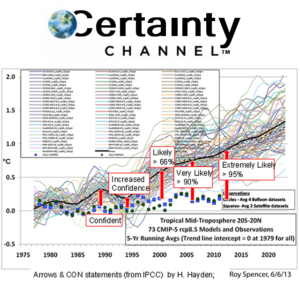by Prof. Dr. Jean N., 11 octobre 2019 in ScienceClimatEnergie
Le dernier rapport spécial du GIEC vient de sortir. Ce rapport, appelé SROCC (“Special Report on the Ocean and Cryosphere in a Changing Climate“), a été approuvé à la 51e session du GIEC tenue les 20 et 23 septembre 2019. Il a déjà fait beaucoup parler de lui dans les médias. Le résumé du rapport à l’intention des décideurs (SPM) a été présenté lors d’une conférence de presse le 25 septembre 2019. Pour ceux qui comprennent l’anglais, qui ont une formation scientifique et surtout qui ont le temps de lire 1170 pages, le fichier PDF de ce rapport est disponible sur le site du GIEC. Le présent article analyse le chapitre 4 de ce rapport, celui qui traite de la montée des océans. Rassurez-vous, nous n’allons pas critiquer la montée du niveau des océans qui est un phénomène bien réel. Nous allons plutôt montrer que les auteurs ont étrangement omis certaines explications qui relativisent la portée de leurs conclusions, notamment concernant la cause de la hausse du niveau marin.
1. Structure du chapitre 4
Ce chapitre 4 consiste en 168 pages et a pour titre “Élévation du niveau de la mer et conséquences pour les îles, les côtes et les communautés de faible altitude“. Les deux auteurs coordonnateurs de ce chapitre sont Michael Oppenheimer (USA) et Bruce Glavovic (Nouvelle Zélande). Les auteurs principaux sont au nombre de 13 et les auteurs contributeurs sont au nombre de 31. Au final, 46 scientifiques ont donc contribué à écrire ce chapitre. Rien que pour ce chapitre les auteurs citent un peu plus de 1500 références, essentiellement des articles scientifiques.
Qu’apprend-t-on dans le chapitre 4?
Pour faire simple, nous y apprenons : (1) Que le niveau moyen des océans monte toujours et que la vitesse s’accélère; (2) Que cette montée du niveau marin est essentiellement causée par l’homme; (3) Que l’on peut calculer ce qui va se passer dans le futur grâce aux modèles numériques; (4) Que l’on peut éventuellement se protéger de la hausse du niveau marin par toute une série de mesures.
Nous allons maintenant nous focaliser sur les points n°1 (montée du niveau) et n°2 (les causes).
2. La montée du niveau moyen des océans selon le SROCC
…









